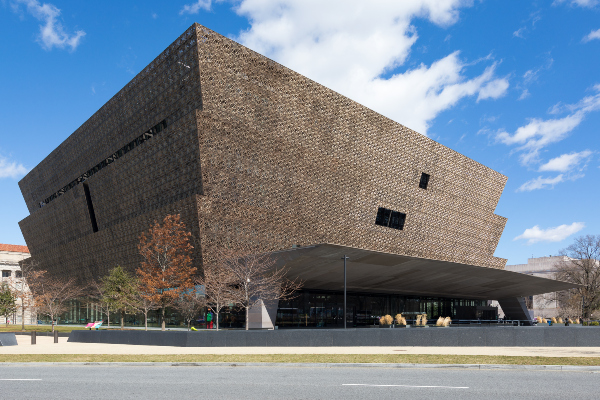Last week, on a visit to Washington, D.C., I spent some time in two new museums and walked away wondering why we don’t have museums like that in the U.K.
The first was the National Museum of African American History and Culture. This museum, established by an act of Congress in 2003 and finally opened just seven years ago, is enormously popular. It tells the story of the Black experience in America, from slave ships right up until the Black Lives Matter movement. One cannot walk through its many rooms and not be moved.
Some of the rooms warn the visitor: a thick red border around an image is likely to prompt strong feelings of discomfort. This was particularly true in a room about lynchings, where many images made for difficult viewing.
Equally moving were the videos and photos of the civil rights leaders, including Dr Martin Luther King and many lesser-known ones—Bayard Rustin, who organised the 1963 March on Washington and his mentor A. Philip Randolph were both given attention — though it was not mentioned that either was a socialist.
The main message of the museum infuriates all of Donald Trump’s supporters in its unflinching depiction of the horror of centuries of slavery, oppression and racism. To the American Right, the museum would be seen as a terrible example of ‘woke’. To the rest of us, it’s indispensable.
The second museum, also new but not nearly as crowded, was the National Museum of the American Indian. This massive museum at the heart of the national capital tells a painful story of conquest, betrayal and, ultimately, genocide.
I thought I knew my American history pretty well. Still, I learned much — including the full horror of the ‘trail of tears’, which was the forced expulsion of vast numbers of indigenous people from their traditional homelands.
Visiting these two museums, I could not help but wonder if they would survive a second Trump term in the White House — indeed, I’m surprised they survived a first one. The strong negative message both museums conveyed — by telling the truth, I should add — is the opposite of the ‘make America great again’ story told by the Republican Party (and not only by Trump).
But I also began to think about why we don’t have national museums in our capital about the history of the British Empire.
Liverpool has a museum about slavery, but that only tells part of the story. And there’s a narrative told by some British politicians that it’s a good story — a story of how moral leaders like William Wilberforce ended the slave trade and the positive role played by the Royal Navy in enforcing the ban.
Museums like the Imperial War Museum exist to teach a version of British history that culminates in 1945. One does not admire Spitfire aircraft at the RAF Museum or walk on the decks of the H.M.S. Belfast on the Thames to get a critical view of British history.
It’s almost impossible to imagine a large national museum in the centre of London that would take on the truth about the British Empire in far-away lands in Africa and Asia or the history of British rule closer to home, in Ireland.
The two museums I visited in Washington gave prominence to Nat Turner, a slave who led a bloody rebellion against his masters, and Sitting Bull, the warrior chief whose troops dealt a shattering blow to the U.S. Army in the battle of Little Big Horn in 1876.
Can one imagine a museum here in Britain that would tell the story of Bobby Sands and the other Irish Republican prisoners and their hunger strike? Or the Amritsar massacre in India in 1919? Or the establishment of concentration camps during the Boer War?
The history of the British Empire provides just as many examples of oppression and resistance as does U.S. history, but there is little appetite to show these off here. And yet, if we are to counter the false narrative promoted by Tory historians who carry on endlessly about the problem of ‘woke’ history, maybe we need to consider doing what the Americans have done.
Maybe it’s time for a national museum about the British Empire.
This article appears in this week’s issue of Solidarity.
